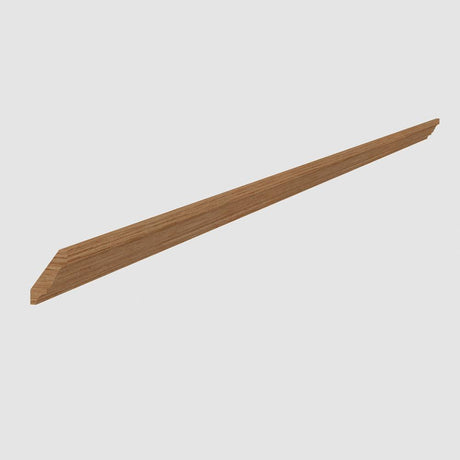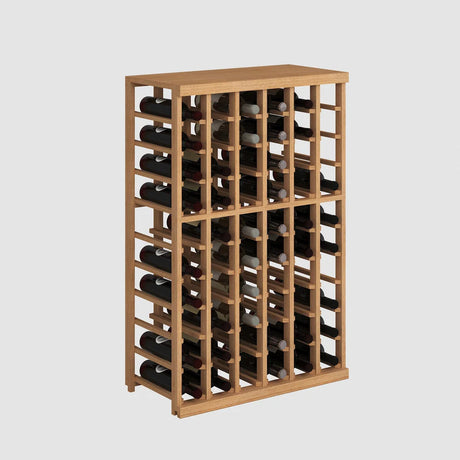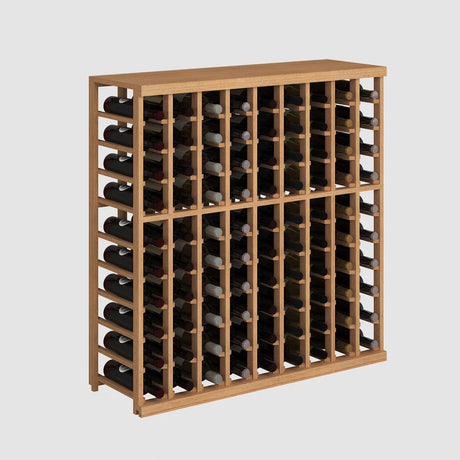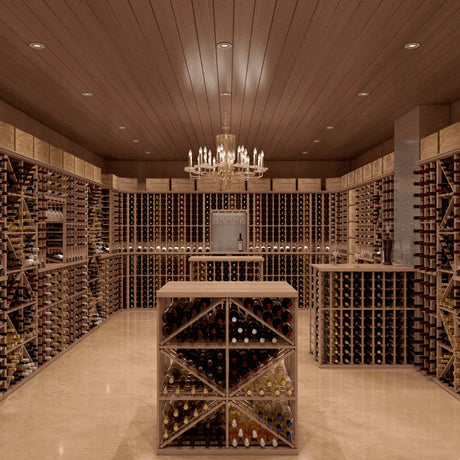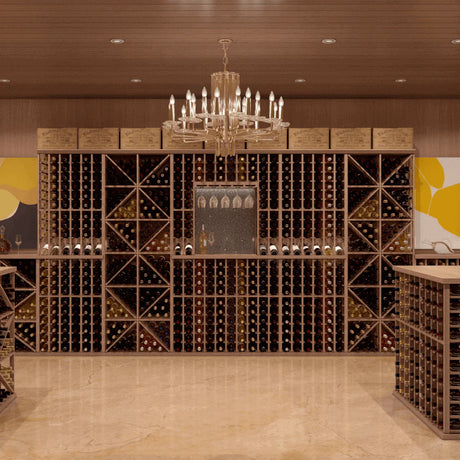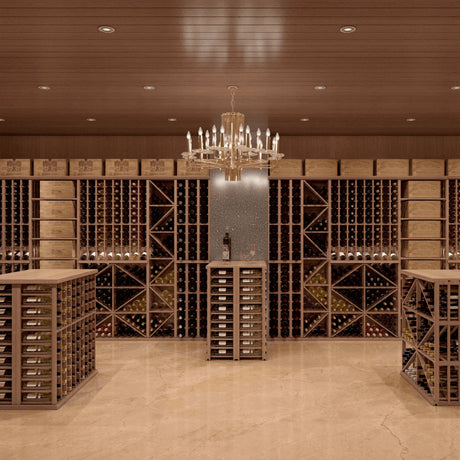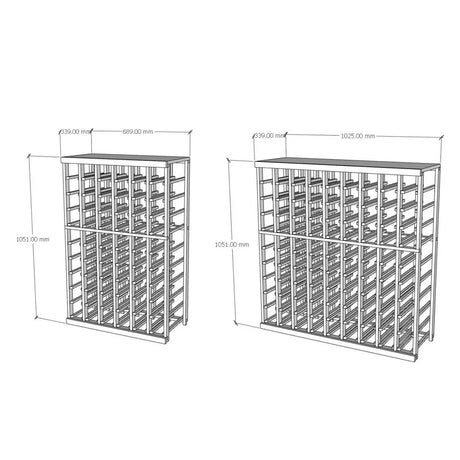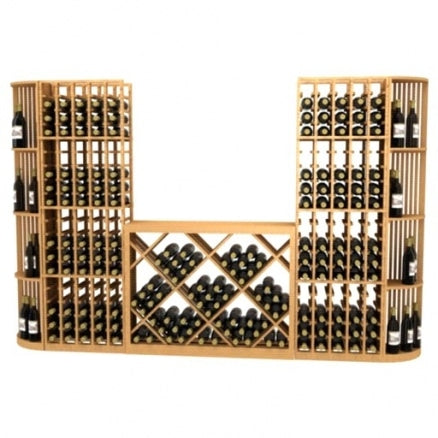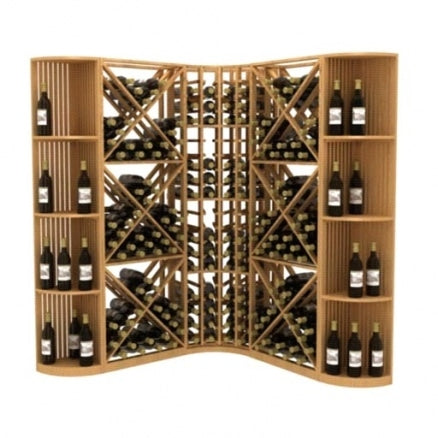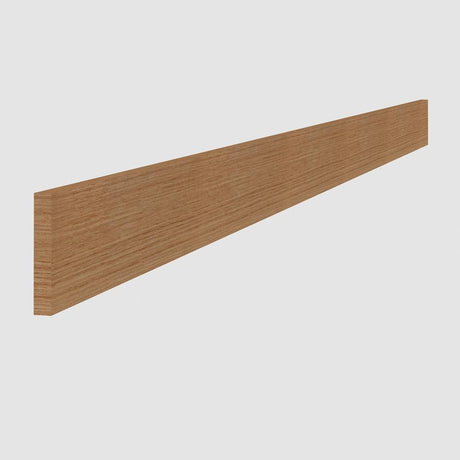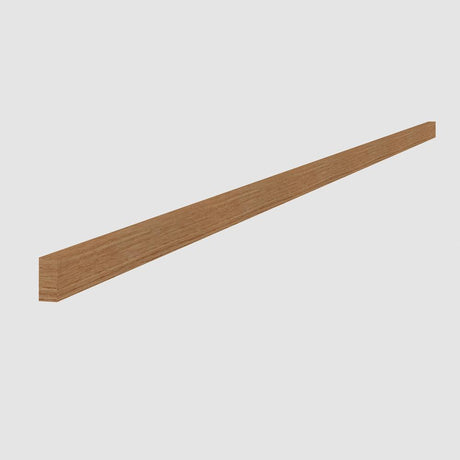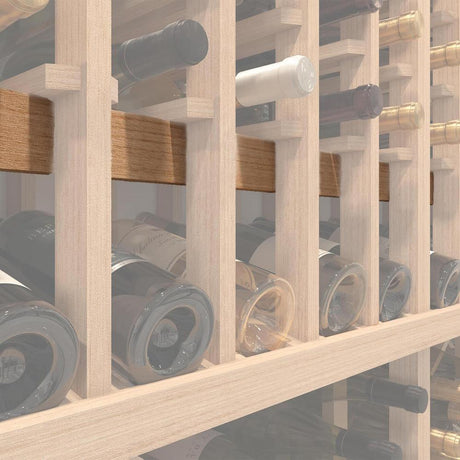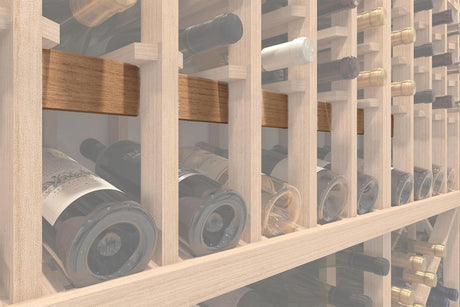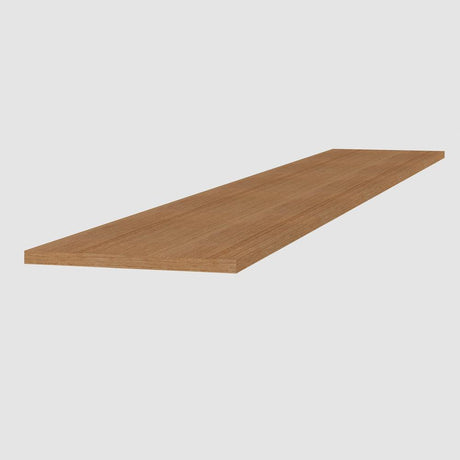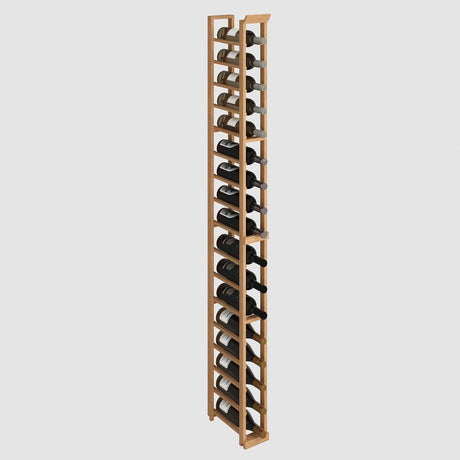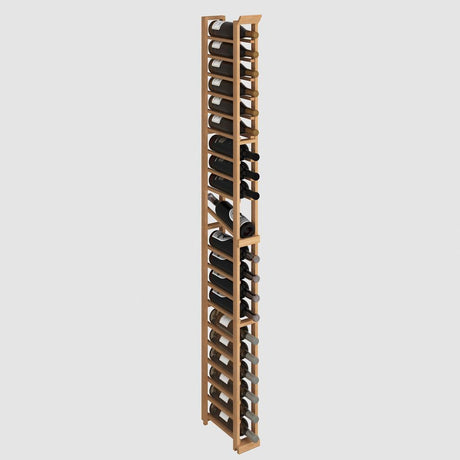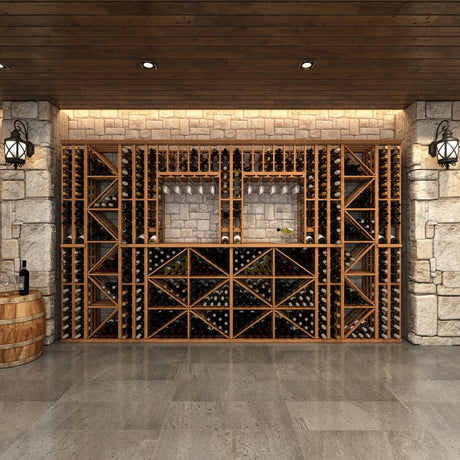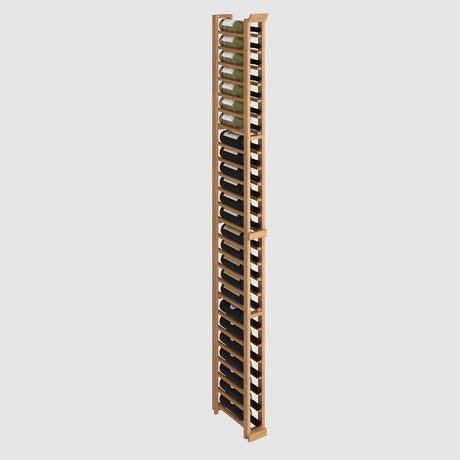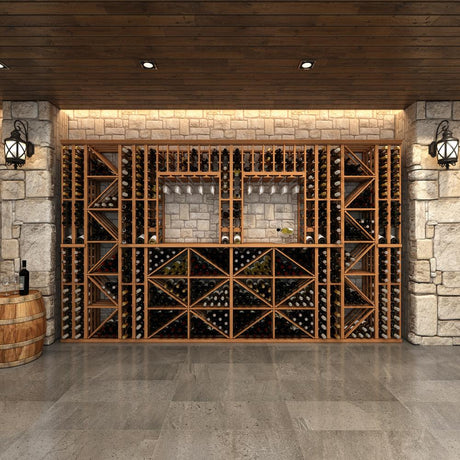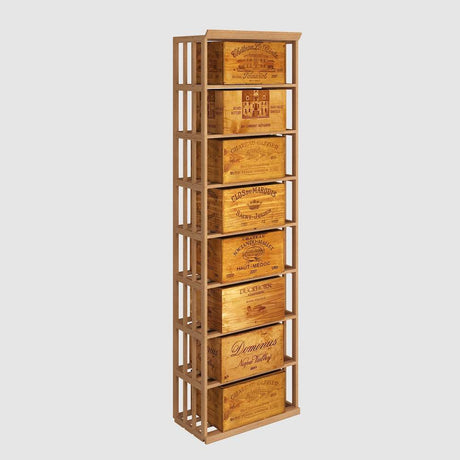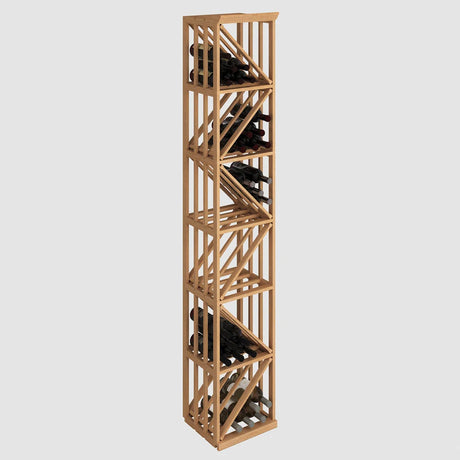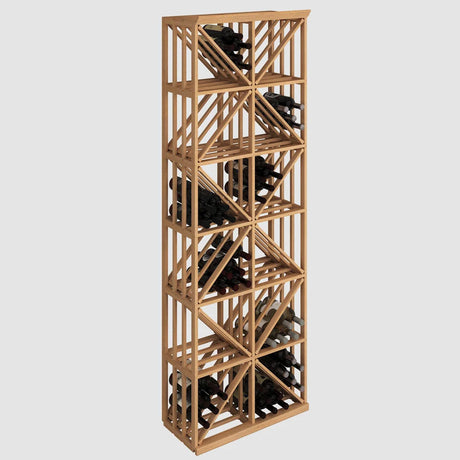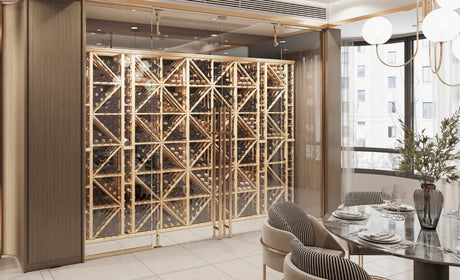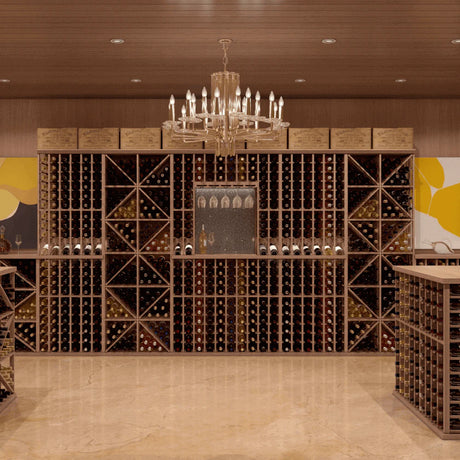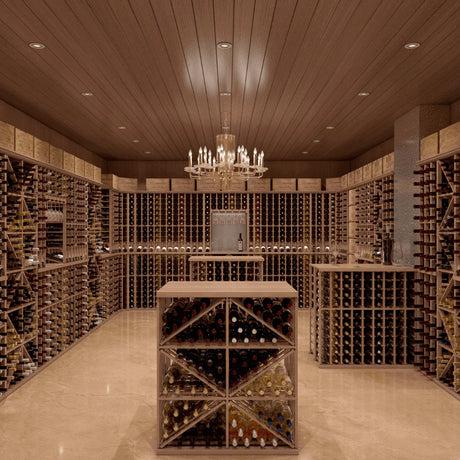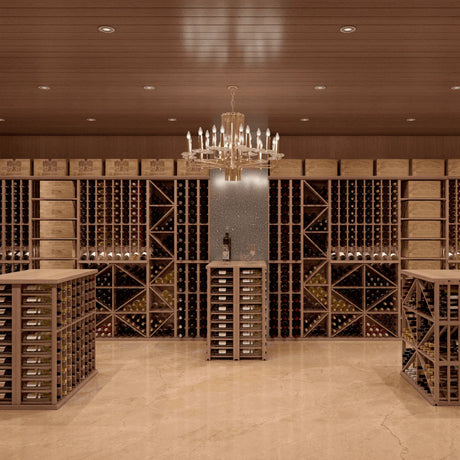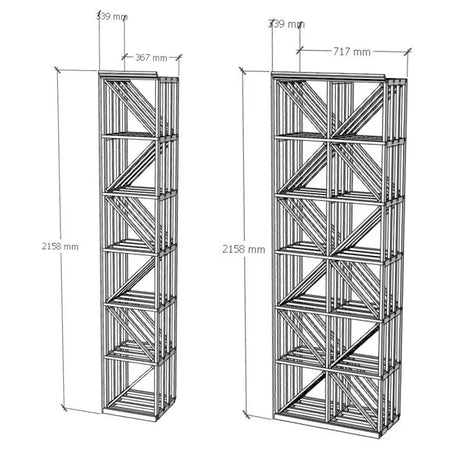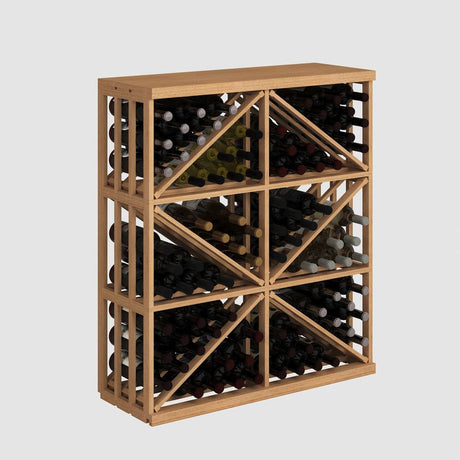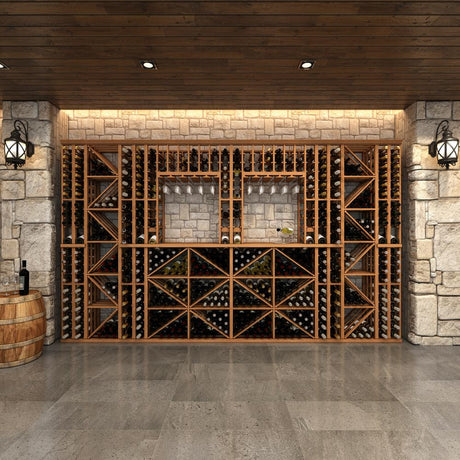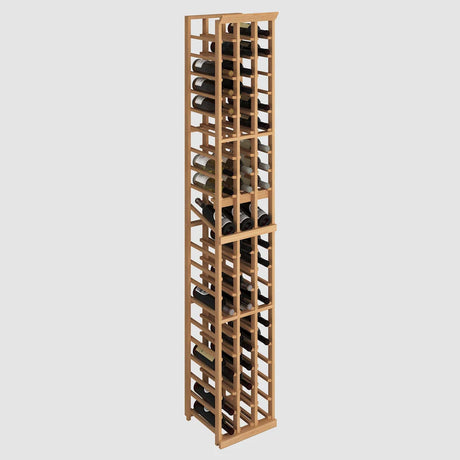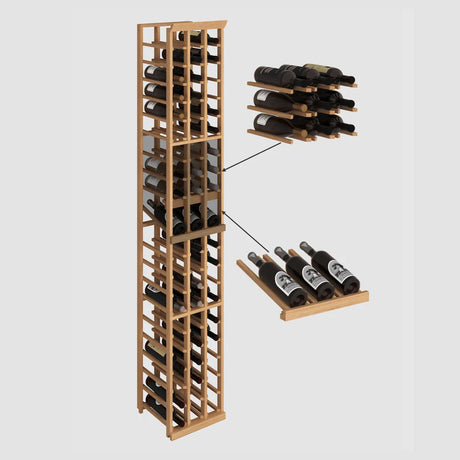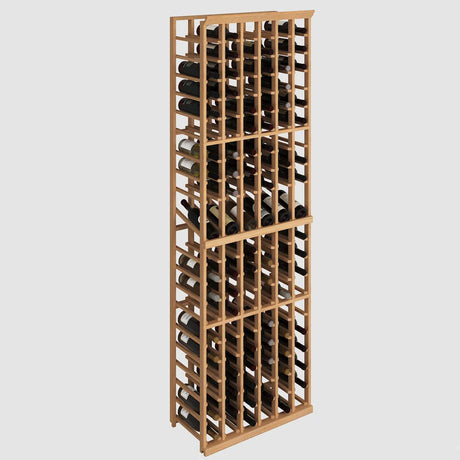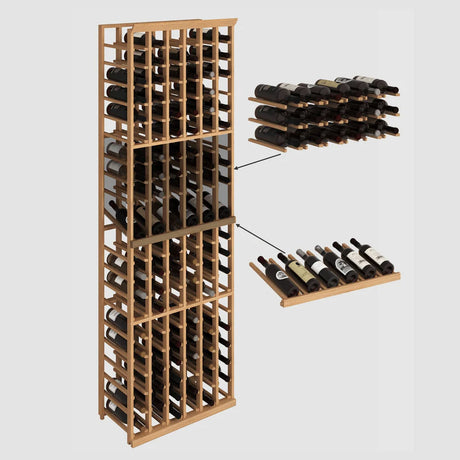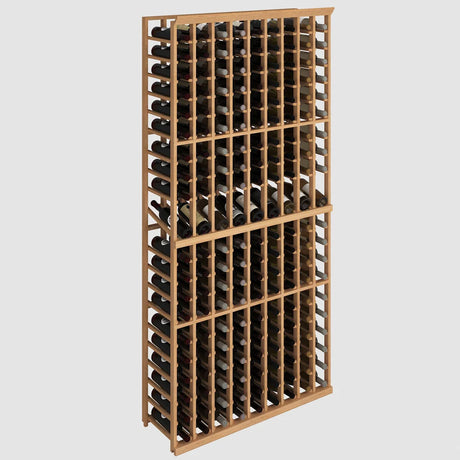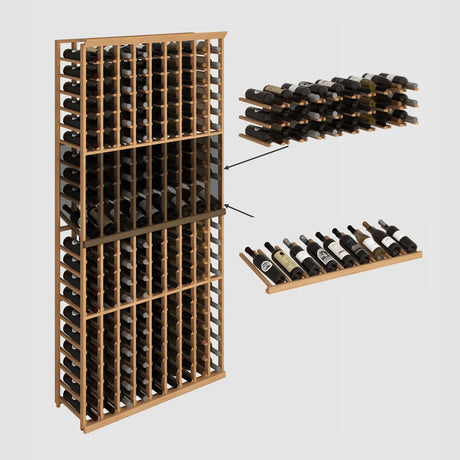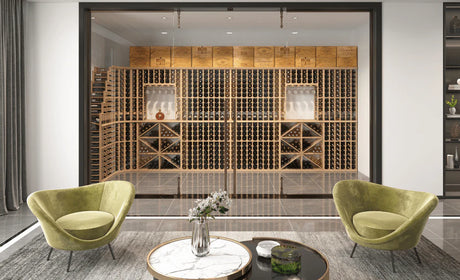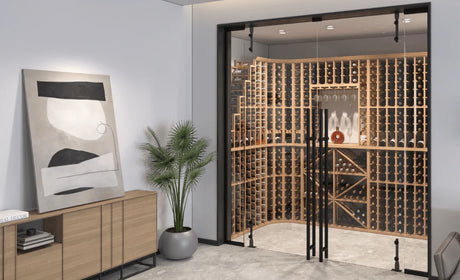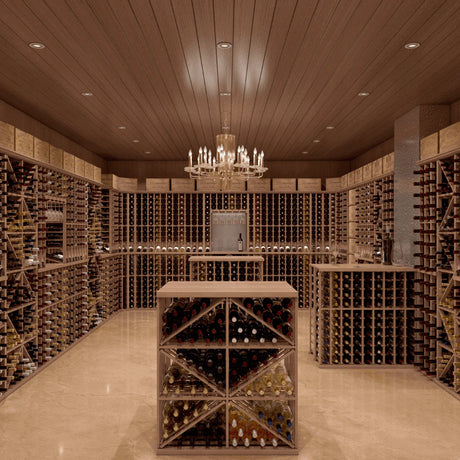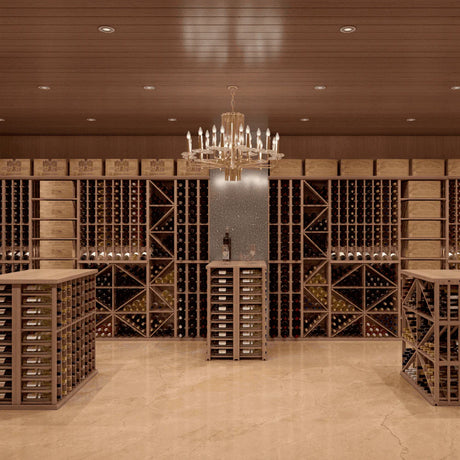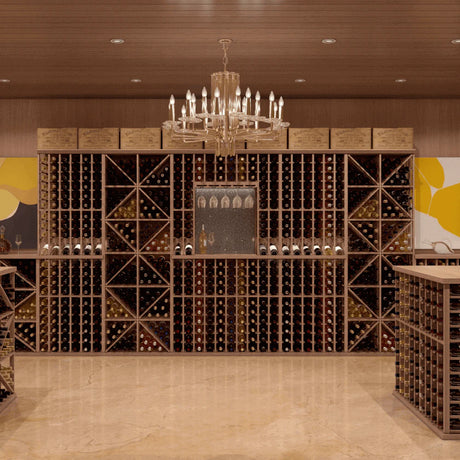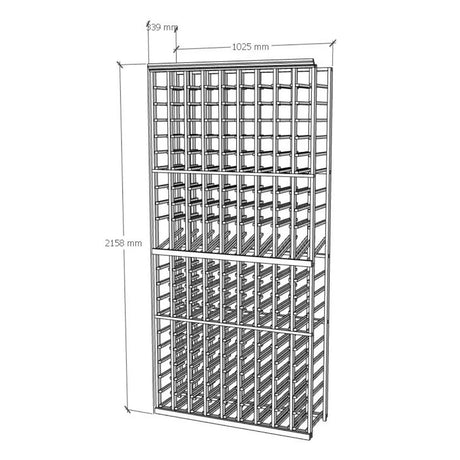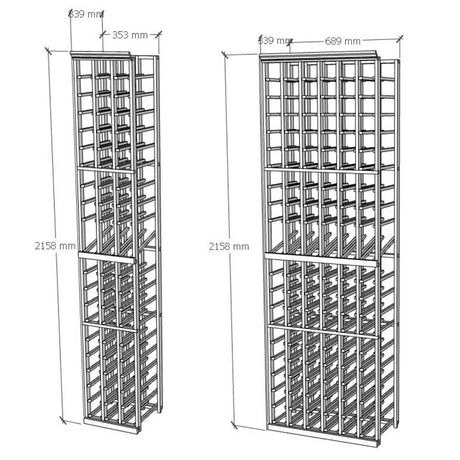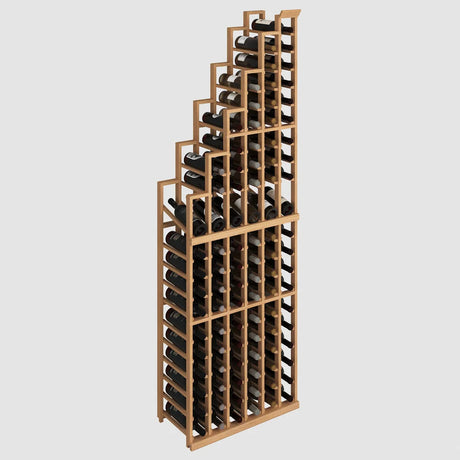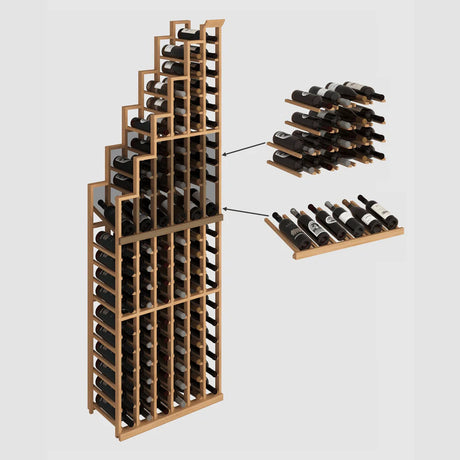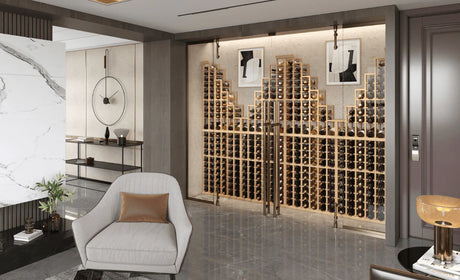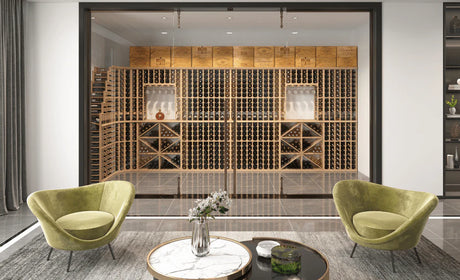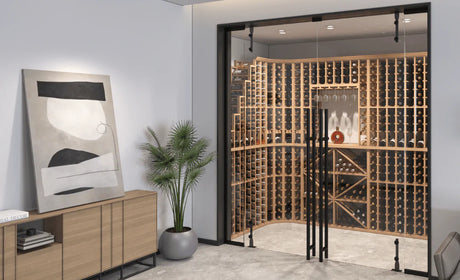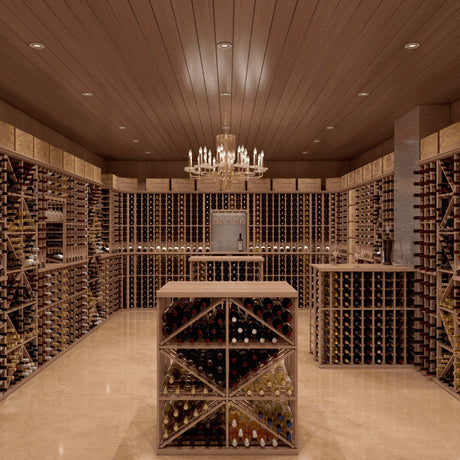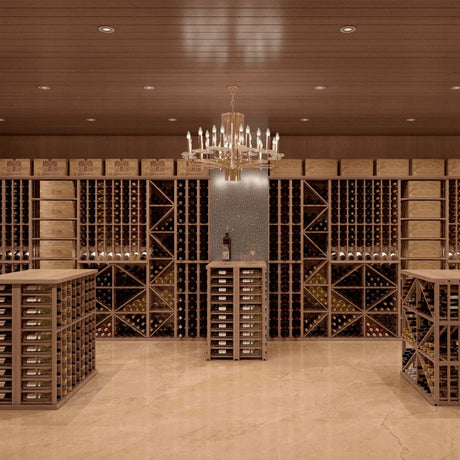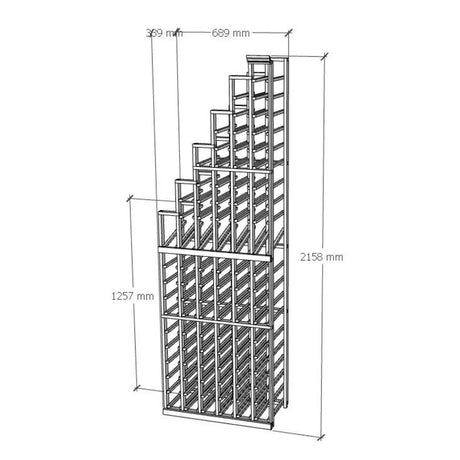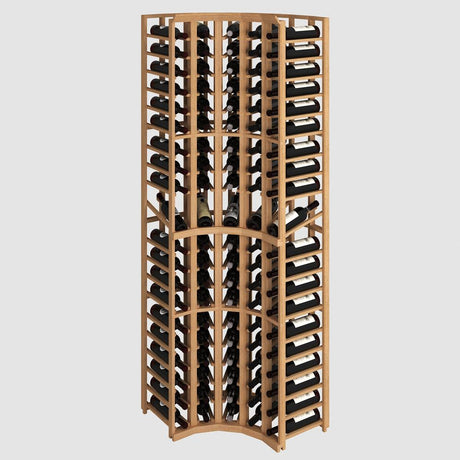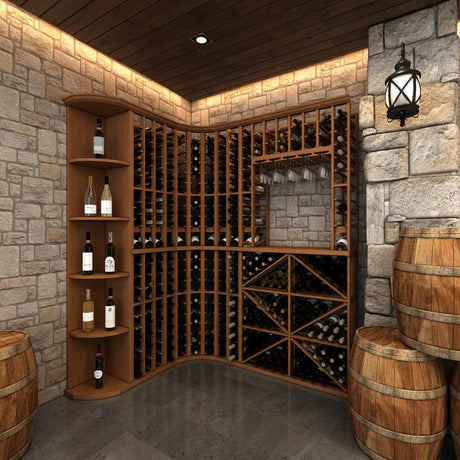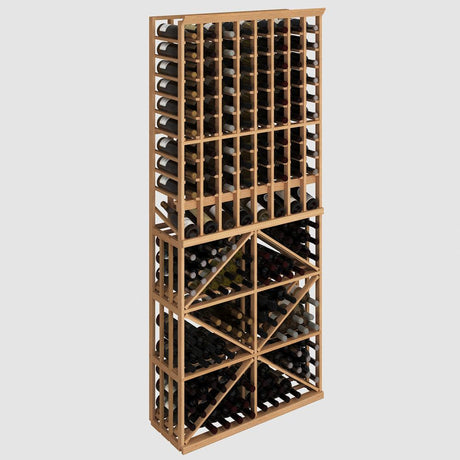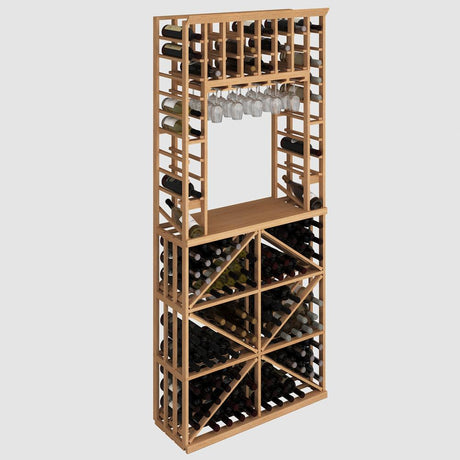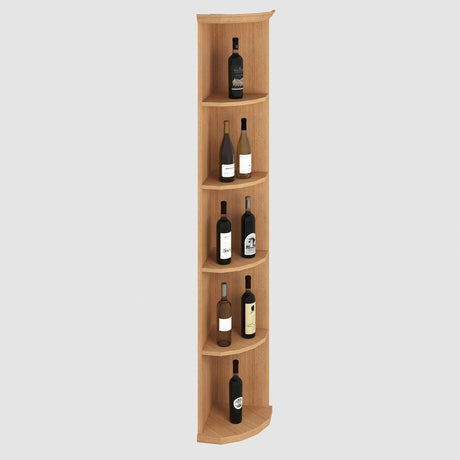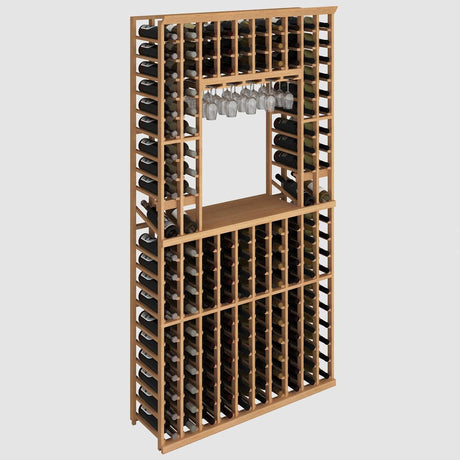Best wood types for wine racks in varying climates

Wood species affects durability and climate resilience.
Think wood is just about color? Think again. You are investing in a structural material that interacts with time, air, and moisture - three of the biggest enemies to a stable aging environment.
The best wood species for your wine rack kit is Mahogany. It is extremely resistant to rotting, decaying, and infestation. The wood doesn't smell so that it won't affect your wine's flavor.
Look under the hood:
| Wood Type | Density (lbs/cu ft) | Resistance to Rot | Thermal Stability | Aging Characteristics |
|---|---|---|---|---|
| Pine | ~22 | Low | Poor | Yellows, warps, shrinks |
| Redwood | ~28 | High | Excellent | Deepens in tone, stays stable |
| Mahogany | ~35-40 | High | Exceptional | Develops a rich patina |
Let us not just whisper Janka ratings like they are wine scores - they are real-world measures. Pine? A laughable 380 lbf. Mahogany? Up to 1,100 lbf. That is not just impressive - it is essential. Especially when each 750ml bottle weighs 2.65 lbs and you are stacking 60 of them in your wine cellar.
Imagine this: Your basement crests 68% humidity each August. You have got redwood doing laps around pine in dimensional stability, smiling at mildew while pine gives up the ghost. Mahogany, though? It is there stoically, like a Riedel decanter in a sea of plastic cups.
“Choose only one master - nature.” - Remind yourself of Leonardo da Vinci next time you are picking wood.
Takeaway: Do not just pick wood for its looks. Pick it like you would pick an architect for your home - with a resume that holds up under pressure.
Okay, the wood is solid. But what happens when you bring it into your kitchen?
How to match a wooden wine rack finish with your interior design

Finish choice influences cohesion and perceived quality.
We have all seen it - that “espresso” wine rack wedged into an otherwise caramel-toned custom kitchen. It is the visual equivalent of putting ketchup on Wagyu.
Finishes are not secondary. They are signaling devices - they tell your guests, subconsciously, whether this was intentional or improvised.
Let us explore:
- Undertone Compatibility: Your walnut cabinets lean warm. Your rack better not lean cool-gray, or it will fight your floors every time light hits.
- Sheen Level: Matte (<10% gloss) blends into modernism. Satin (~30-40%) hugs transitional spaces. High-gloss? Use wisely - you are not building a Steinway.
- Movement Pattern: Mahogany grain dances like silk drapes - oak, on the other hand, roars with cathedral arches.
Got a colorimeter? Use it. Tools like the Nix Mini 2 let you match stains within a 2-4 Delta E range. (That is design-speak for “your eyes will not scream.”)
Want real-world proof? Look at the tasting room at Quintessa - ever seen a mismatch in their palette? Neither have your clients.
Takeaway: Visual misalignment is like bad acoustics in a concert hall - nobody notices when it is good, but everyone cringes when it is not.
You have got the look. Now comes the existential question: Can it grow with you?
Modular wine rack systems for expanding collections

A modular system supports long-term collection growth - perfect for wine cellars.
You start with 24 bottles. You tell yourself that is plenty. A few gifts, a wine club drop, maybe a Costco haul later, and suddenly you are stashing Barolo next to canned beans. You did not come this far to go horizontal on a pantry shelf.
True modularity is not about stacking blocks. It is about a system that feels like it was always meant to grow.
Let us make it tangible:
- Most collector-grade racks use 13 ½” wide columns and 7 ½” high tiers. Why? They fit everything from a Bordeaux to a Burgundy wine bottle without slop or squeeze.
- Look for expansion kits that connect using cam locks or dowels, not brackets from the hardware aisle.
- Planning for 120 bottles? Start with at least 16 square feet of wall space - and leave 6-8 inches clearance at the top for vertical growth.
Avoid honeycomb racks unless you are storing six bottles and decorating a Parisian Airbnb.
Pro Tip: Plan 20-25% growth annually if you collect seriously. Which means your 60-bottle dream is a 120-bottle reality by next year.
Takeaway: A wine collection is a living, breathing thing. Do not stuff it into something that stops at hello.
Ready to grow? Not so fast. Let us talk about what actually holds the bottles up.
Load-bearing strength requirements for safe wine storage

Joinery and bracing prevent collapse under bottle weight.
We are talking about 1,200+ pounds of glass and liquid. Sitting. Leaning. Pressing. Creaking. And maybe - crashing?
That is not paranoia. That is physics.
Here is the cheat sheet for real strength:
- Mortise & tenon or dado joinery: These techniques distribute load across the joint surface. Butt joints? They barely handle 50 lbs before warping.
- Load rating: Your rack should support at least 20 lbs per bottle slot. Do the math: 72 bottles = 1,440 lbs - across 6 feet of span.
- Back bracing: ¼” thick cross-beam or slatted paneling prevents racking (that side-to-side wobble that starts subtle and ends expensive).
Let us not even begin to talk about wall mounts into drywall without hitting studs. That is the wine equivalent of skydiving without checking your chute, making installing a wall mounted wine rack more challenging.
Want specifics? You will need:
- Lag bolts minimum ¼” diameter for wall-mounted units.
- Stud spacing of 16” on center, and at least two anchor points per rack segment.
Takeaway: The wine is fragile. The rack cannot be. Frame it like you would hang a $10,000 painting - because in a way, you are.
Solid? Check. Now what if you want it to last longer than your mortgage?
Long-term durability and craftsmanship in wine rack construction

Heirloom-quality racks require precise materials and build.
You are not building a college dorm. You are curating a home, cellar, or dining room that says, “I know where I have been - and I plan to be here for a while.” That is where craftsmanship, provenance, and ethics come in.
This is what matters:
- FSC-Certified Woods: The Forest Stewardship Council does not hand these out like candy. If it is stamped, it is sustainably harvested - and part of a long-term global forestry plan.
- Precision Tolerance: ±1/32” tolerances mean the rack fits flush, even after seasonal changes.
- Finish Type: Oil finishes deepen, evolve, and can be reconditioned. Polyurethane? Lock-sealed, but can yellow over time and flake under wear.
Want a real test? Look at the underside of the shelf. If it is raw, splintery, or uneven - it was never meant to last. Quality goes all the way through.
“Quality is never an accident. It is always the result of intelligent effort.” - John Ruskin, quoted in Architectural Digest’s piece on lasting interiors.
Takeaway: This is not “just” a rack. It is part of the architectural rhythm of your life.
Alright. Your rack is solid. But will it protect the wine it holds?
Preventing wine degradation through environmental rack design

Stable wood and airflow maintain wine aging conditions.
Your bottle is not just lying there. It is breathing. Slowly. Constantly. Quietly.
It is the hidden detail most people miss: temperature and humidity do not just change air - they change wood. And wood, in turn, changes how air touches cork.
Even 1°F change affects oxygen ingress. That is not theory - it is chemistry.
Let us diagram some real world truths:
| Risk Factor | Ideal Solution |
|---|---|
| Direct sunlight | UV-inhibiting oil or enclosed cabinetry |
| High humidity | Redwood, mahogany; avoid MDF or plywood |
| Ambient kitchens | Mahogany with vented back, or wine cabinet hybrid |
| HVAC cellars | Any sealed hardwood; avoid softwoods |
Look for:
- Ventilated backs: Even ½” slats allow air to circulate, preventing mildew behind the rack.
- Angled bottle rests (typically 15°) to keep corks moist without risking leaks.
- Moisture Content Stability: Mahogany absorbs <6% water weight in 80% RH - that is a fortress in wood form.
Buy a digital hygrometer. Track your RH. Aim for 55-65%. Anything beyond that? You are not aging wine. You are running an uncontrolled experiment.
This is also why it's so important to have a high quality wine cellar cooling unit to maintain your wine cellar environment.
Takeaway: Your wine is doing chemistry every day. Make sure the rack is not interfering with the formula.
If you want to avoid any of these issues, browse our range of acrylic or metal wine racks instead.
Wine rack buyer's checklist for long-term investment
The right rack supports, protects, and evolves with your collection.
Recap Your Buying Journey:
- Environment Compatibility → Choose redwood or mahogany based on RH >60%.
- Visual Fit → Finish tone, grain pattern, and gloss must match your room’s DNA.
- Scalability → Start modular. Think in 13.5" blocks. Leave vertical space.
- Structural Safety → Mortise, dado, cross-bracing. 1,200+ lbs tolerance minimum.
- Legacy Quality → FSC woods, 1/32” tolerances, oiled finishes. It is a statement piece.
- Preservation-Safe → Slatted backs, angled rests, RH monitored. No exceptions.
You are not buying furniture. You are building your future favorite room. Choose like it is going to be talked about in 15 years - because it just might be.

